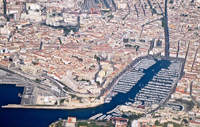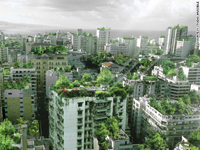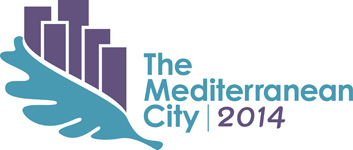Topics
The interrelated topics that will be addressed combined with best case studies are Earth Observations, Water, Energy, Biodiversity and Open Space, Coastal Areas and Marine Environment, Built Environment, Public Health and Governance.

Earth Observations: potential and application for sustainable cities
Earth Observation has proven to be an efficient and accurate solution for addressing urban issues in an innovative way. Moreover, satellite-derived information is becoming ever more readily available thanks to EU’s investments in Earth Observation satellites. Definition of user and citizen needs is the absolute first step for the design and development of any successful Earth Observation system. With a plethora of space platforms and datasets available to the scientific community the need has emerged for fast and targeted processing of satellite data for the derivation of parameters relevant to the urban environment and sustainable cities. Relevant topics include their implementation in real time, online accessibility, long archive generation and consistency between cities with similar characteristics. Thus, the Mediterranean city can be an excellent laboratory for such developments.

Water: resilient water management strategies in a changing climate
Water is among the most basic of human needs and is necessary for economic vitality and food security. In the Mediterranean City, water is harnessed for consumption, industry, and waste management, while flood control systems seek to move water away from cities as efficiently as possible. Degradation of water quality occurs from urban practice and single purpose policy. As water scarcity increases with climate change, and as demand continues to outpace sustainable supplies, human and natural communities of the City and of the water-supply-shed are threatened at the most basic levels.

Energy: transitioning to an energy efficient and low carbon future
With a natural supply of abundant solar energy and the potential for tidal and off-shore wind and wave-to-energy power, the Mediterranean climate zones have great potential to harness renewable energy supplies. However, as urban populations in Mediterranean Cities continue to grow, renewable resources demand may outstrip renewable resource availability. Needs and costs of production must be better understood and affordable to move forward in producing green energy.

Biodiversity and Open Space: building an ecological city
Mediterranean ecosystems have nutrient−poor soils and are seasonally climate−limited, yet have evolved species−rich ecosystems with a great deal of endemism. Healthy ecosystems provide nature’s services to urban centers, cleaning air and water; providing spaces of beauty to refresh the soul and encourage recreation; producing food, fiber, and fuel; and mitigating natural disasters (e.g., drought and flood) while cleaning of polluted urban runoff.

Coastal Areas and Marine Environment: protecting our sensitive most populated zones
A large percentage of the Earth’s population lives by the sea. Rising sea levels and changing extremes pose significant risks to the coastal population and infrastructure. At the same time land based pollution, the exploitation of marine zones for food and the transport of goods and passengers to and from cities are the main reasons for the degradation of the marine environment in coastal areas. Sustainable cities require integrated planning of the land, sea and atmospheric environment so that the marine and coastal ecosystems are preserved and their environmental status is improved while at the same time coastal protection and economic activity develop.

The Built Environment: designing healthier communities
In the face of rapid development and population growth, cities are under increasing threat of loss of functionality and ability to meet the needs to their residents. By redefining the built environment to require or incentivize green building design, ecologically-functional streets, transit-oriented communities, and open spaces, cities can become more resilient to the impacts of climate change. By becoming more compact, for example, cities can promote the preservation of regionally-unique habitats while also combating urban sprawl. Smart building and landscape designs can also effectively reduce the energy footprint of buildings while contributing to the overall energy portfolio of cities.

Public Health: preparing people for their future
A healthy ecosystem – dependent on clean air and water, natural hydrogeologic processes, and biological diversity – nurtures a healthy human population, which in turn must respect and tend those resources through conservation. Human systems too must reorient towards healthier outcomes for natural and human populations through changed practices in sanitation, food provisioning, and ecosystem services management. Planning for greener cities that conserve these Mediterranean resources will also provide avenues for improving public health. Prevention of deaths or hospitalizations cause by climate change events could also be possible with adequate response and planning.

Governance: rethinking boundaries
Cities are now the engines of the world economy and social structure. They must, therefore, work as a network across sectors and national boundaries to bring more resources and knowledge to building sustainable solutions. To bring resilience to the city and to the network of information sharing, new forms of governance and public-private partnerships must be examined for their efficacy in supporting an open exchange and transfer of ideas, best practices and technology.























